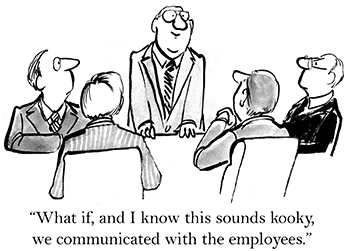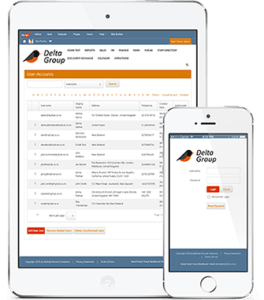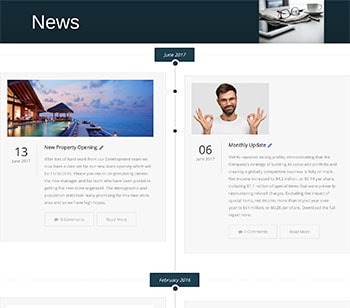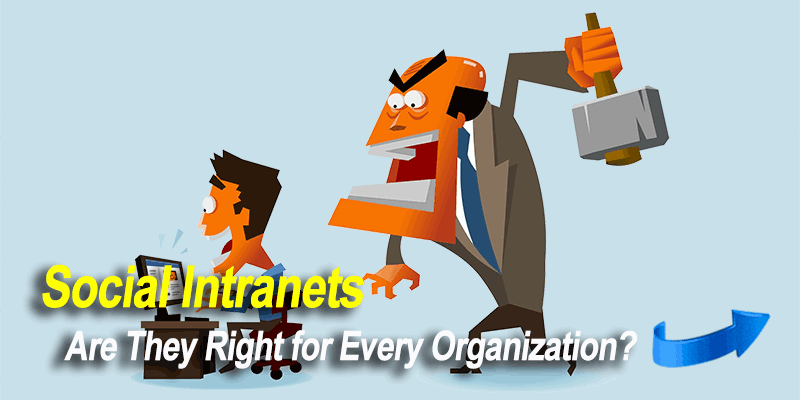Internal Communications
Internal communications isn’t just about keeping employees informed about what’s going on. It’s no secret that a good internal communications strategy is critical to company morale, productivity, and even revenue. The truth is that internal communications is a key driver for employee engagement. And it makes sense that an engaged employee who is invested in the company, understands their role within it as well as the bigger picture is a more productive one. A strong internal communications strategy that promotes conversations and connections at all levels of the business is often the kick-start employee engagement needs. Indeed, the latest research from Gallup suggests that although the number of engaged employees is slowly improving, 53 percent of workers are still in the ‘not engaged’ category. In practice, this means that the majority of workers do not feel connected to the company. These types of workers simply show up and do the minimum necessary and will often quickly leave their company for a slightly better offer. Companies are losing as much as 20 to 25 percent of their revenue each year due to disengaged employees.

- company to employees
- employees to the company
- employees to employees.
A successful internal communications strategy needs to tick all these boxes for your business. In this post, we highlight eight internal communications trends that you need to be on top of if you want to meet the needs of today’s workforce.
1. Use Diverse Communications Channels
For the first time, companies could potentially be employing staff from across five different generations. Whether the employee is from the Silent Generation, Baby Boomers, Generation X, Millennials or Generation Z, each will have their own preferences when it comes to communication channels. Older employees may have a preference for face-to-face communication and team meetings, whereas the digital natives in the workforce will be used to sharing information across a range of technological platforms.
Companies now need to think broadly about the diversity of channels used within the internal communications strategy. In this way the needs of all staff members can be addressed, so think podcasts, video, blogs, wikis in addition to the more traditional team meeting, paper-based newsletter and staff conference.
2. Targeted Personalized Content

3. Optimize For Mobile Platforms
Whether your company distributes its own devices or has a ‘bring your own device’ policy, employees must be able to keep in touch with head office and access key corporate information from their mobile devices. Mobility gives employees continuous access to all the important tools they need to complete their work, including communications channels. One survey reported that 94 percent of employees think mobile devices make their work more efficient.

In addition, devices help to increase employee engagement. Everywhere you go, you find people reading news, blogs or searching popular topics on their devices. We have become a generation that just can’t sit idle. Keep your employees engaged and informed by making the intranet’s news pages available on mobile devices. Staff members can easily check up on company news, corporate events, announcements or other relevant content while commuting into work, waiting for their morning takeaway coffee or when they have a couple of minutes to spare before an off-site meeting with a customer.
4. Get Social
Social networks are hugely popular outside the office, but what about internally? Despite some initial hesitancy from employers, more and more companies are now utilizing social intranets as a way to address all three communication needs: company to employee, employee to company and employee to employee. Fears that social intranets would degenerate into a glorified office version of Facebook with employees wasting their time on silly and irrelevant content have, in practice, not materialized.
The truth is that internal social networks are a great way for managers, and even CEOs, to stay connected to their employees. Do away with boring company memos and all staff emails for good. Instead look at interactive blogs which allow employees the opportunity to comment and share insights with senior managers. Furthermore, the social intranet’s online surveys function means that management can quickly and easily canvas staff views on a whole range of issues – from seeking feedback on the new company logo to brainstorming ideas on an updated marketing plan or even seeking ideas for the location of the office Christmas party. Donald Trump with his voracious use of Twitter has demonstrated just how much CEOs can extend their leadership and visibility with digital channels.
Social intranets are also great facilitators of employee to company communication. Why not set up a staff forum across the organization? Employees can post their bright ideas on how to improve production or a service aspect as well as their gripes and complaints. The forum will need to be moderated to ensure only valid and relevant content is published but it does offer a genuine platform for employees to get their views across to management who can then publicly respond.
And when it comes to communication between employees, the social intranet is hard to beat. As well as the interactive functionality we have looked at above, the social intranet also offers self-service features that are very motivating for employees. For example, the social intranet’s employee directory that includes current work projects and expertise means that the marketing manager can cherry pick potential members of a cross-departmental working group to look at developing a new digital marketing strategy. In addition, individual and site activity walls as well as follow me functionality mean that staff can select internal subject experts and projects of interest to follow.
What’s more, the social intranet can also have a positive effect in surprising ways. Here’s a great example featured in a recent Harvard Business Review. The Red Robin restaurant chain launched a new burger called the “Pig Out Burger” in 2012. Employees immediately started posting customer feedback on their internal social network, and it was not good. Managers jumped in and tweaked the recipe, re-launching the improved burger just four weeks later. Without quick feedback through the company’s social intranet, the process of gathering data and improving the burger would have taken 12 to 18 months. Social networks are a great way to get away from the dreaded e-mail chain and start a conversation that gathers input from all levels throughout the organization, and most importantly, leads to quick change.
Why not give it a go in your business. Try creating a social network with an interactive, engaging activity feed that sees employees wanting to check into the intranet. Make the activity feed the dominant feature of your intranet homepage. Share articles, announcements and other important information. And encourage employees to post what’s happening in their department and to share likewise. The truth is that the majority of companies that go down this route soon discover that far from being a time waster, social intranets actually save time with the efficiencies and improved connections they foster.
5. Have Fun With Gamification
Companies have held contests for years. Fundraisers, sales competitions, leader boards, wellness programs and many others have been keeping employees engaged and motivated. It’s the recognition and status that comes with success that is so appealing to the competitive spirit that is in all of us.

Some companies have even taken gamification a set further by exploring virtual reality (VR) apps as a means of training or onboarding new and existing staff members. Certainly in some fields – pilots, train drivers, mining personnel or service technicians for example – using VR to train members in near identical working conditions replicated by technology has its merits and can be a cost-effective solution.
There’s no doubting that gamification in the workplace is a communication and engagement tool we are likely to see more of the future. It’s certainly a useful tactic for motivating employees especially those involved in sales and customer support and it also has a place in general training and all-round employee engagement. So, it’s worthwhile considering gamification as part of a comprehensive communications strategy.
6. Create An Executive Blog
We have touched on this already but in the online world, blogging has become such an important means of building trust and shaping reputations that it’s a good idea to consider replicating it in the workplace. Just as an effective blog positions a company as a thought leader and as a valuable source of information, so an internal CEO blog can have the same effect on staff members. CEOs and higher level executives are often obscure to lower-level employees. Visibility is often poor and there’s no sense of connection between the two. It is, however, possible to close that gap through an informative, friendly blog post from the CEO or you could rotate the responsibility through the company’s top managers.

Don’t make the mistake though of using the blog solely as a corporate mouthpiece. Yes, of course, you should broadcast important company updates and messages, but you are more likely to resonate with the wider staff body if you mix it up with personal reflections on topics and issues that are important to you. Take a leaf out of the book of Mark Zuckerberg. His very personal blog post directed to his new-born baby, A Letter To Our Daughter, quickly went viral and the reason why is because it was genuine and authentic and touched people in a way that no insipid corporate message could ever do.
7. Include A Video Library
Document resources are great, but it’s unlikely that employees are going to read through the employee handbook in their free time. Make policy changes and other announcements fun and personable by using video instead of traditional print media.
One study found that 90 percent of communications professionals feel that video plays an “important” or “somewhat important” role in their organization’s communication strategy. Indeed, the popularity of YouTube among some of the younger generational cohorts means that video has now become a mainstream communication channel in many business. What’s more, the camera and video capabilities of the average smartphone or tablet have improved so much that video is now a very accessible as well as a cost-effective medium.
Here are some ideas on how you can incorporate video into a far-reaching communications strategy. Consider alternating a text-based CEO blog post with a video message. Advise employees of a new product launch via video. Utilize how-to videos to take staff members through the steps necessary to complete a task such as adding a new supplier to the database. Be innovative. The applications are almost endless so be imaginative in your thinking.
In addition, make sure that you create a video library that allows employees to search, comment and share content. The company intranet is the ideal location for such a library. And while you’re at it introduce an element of fun too by posting video clips from team building events or funny happenings around the office. You can then sit back and watch engagement skyrocket as employees look for videos of themselves and their co-workers.
8. Introduce An Element Of Storytelling

When reviewing your internal communications strategy, look for opportunities to incorporate storytelling. It will make those corporate messages more meaningful and engaging and so will benefit everyone from the CEO down to the customer support officer.
Boost Internal Communications With An Intranet
The bottom line is quite simple. Improving internal communications will see a corresponding increase in employee engagement, levels of employee satisfaction and overall company morale. This, in turn, will have an impact on customer service, productivity and revenue. So, if internal communications has been a low priority in your business or is something that you just haven’t had the spare capacity to address, then it’s time to do something about it.
The trends we have identified here can be quickly and easily implemented via a company intranet. Super easy to setup and manage on an ongoing basis, you don’t need to be a technical whizz to get an intranet up and running. What’s more, as well as improving internal communications, the company intranet will at the same time deliver a whole host of other business benefits: from automated company processes through to improved opportunities for collaboration and joint working as well as more efficient sharing of information and data both internally and externally.
Get in touch with the expert team ay MyHub to discover just what a difference an intranet can make to your business. Contact us today to take advantage of the free demo or 14-day no obligation trial and explore the possibilities for yourself.
Further Information
If you are interested in finding out more about internal communications, then there’s a wealth of additional resources on the MyHub blog. Browse through the blog for some inspiration or to check out related topics such as employee engagement, communication tools, remote working, intranet content or employee motivation among plenty of others. Here’s a selection of additional reading you may find interesting.
Internal Communications: How Technology Can Bring Them To Life
CMS Intranets: How To Improve Internal Communications In Your Organization
4 Important Facets of Internal Communications
Improving Employee Engagement: Why It’s Good For Business And How To Achieve It
Employee Motivation: Do You Know What Makes Your Staff Tick?
Better Collaboration Through Improved Internal Business Communications








You share amazing information, I really enjoyed this information but here also these trends are really helpful for boosting your internal communication which is that Set your smart goals and also Create your plan and your calendar.